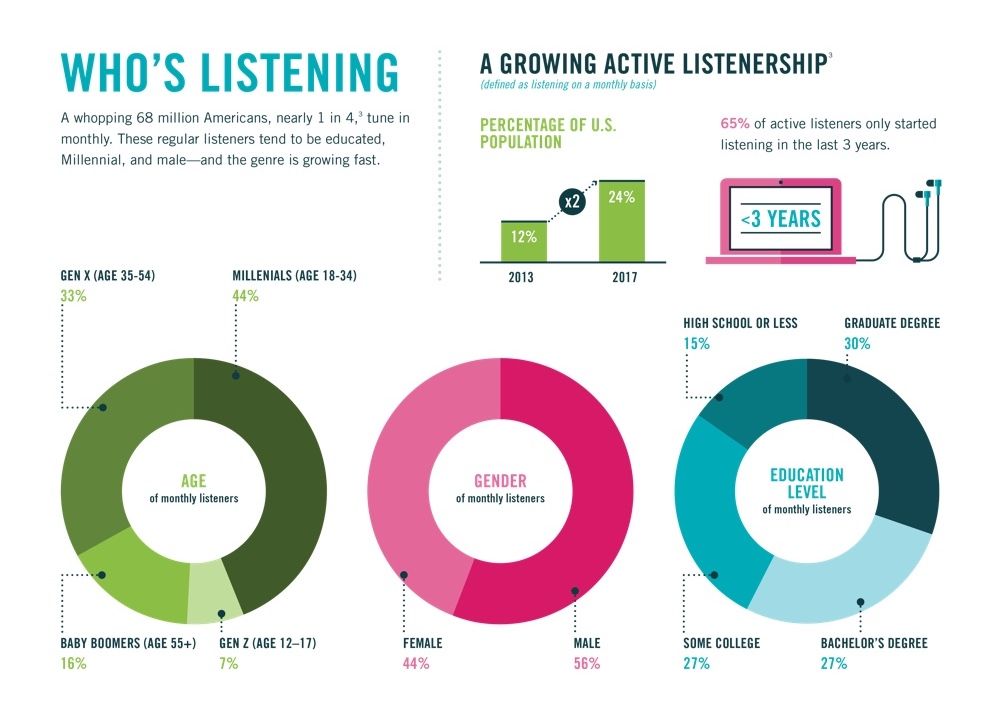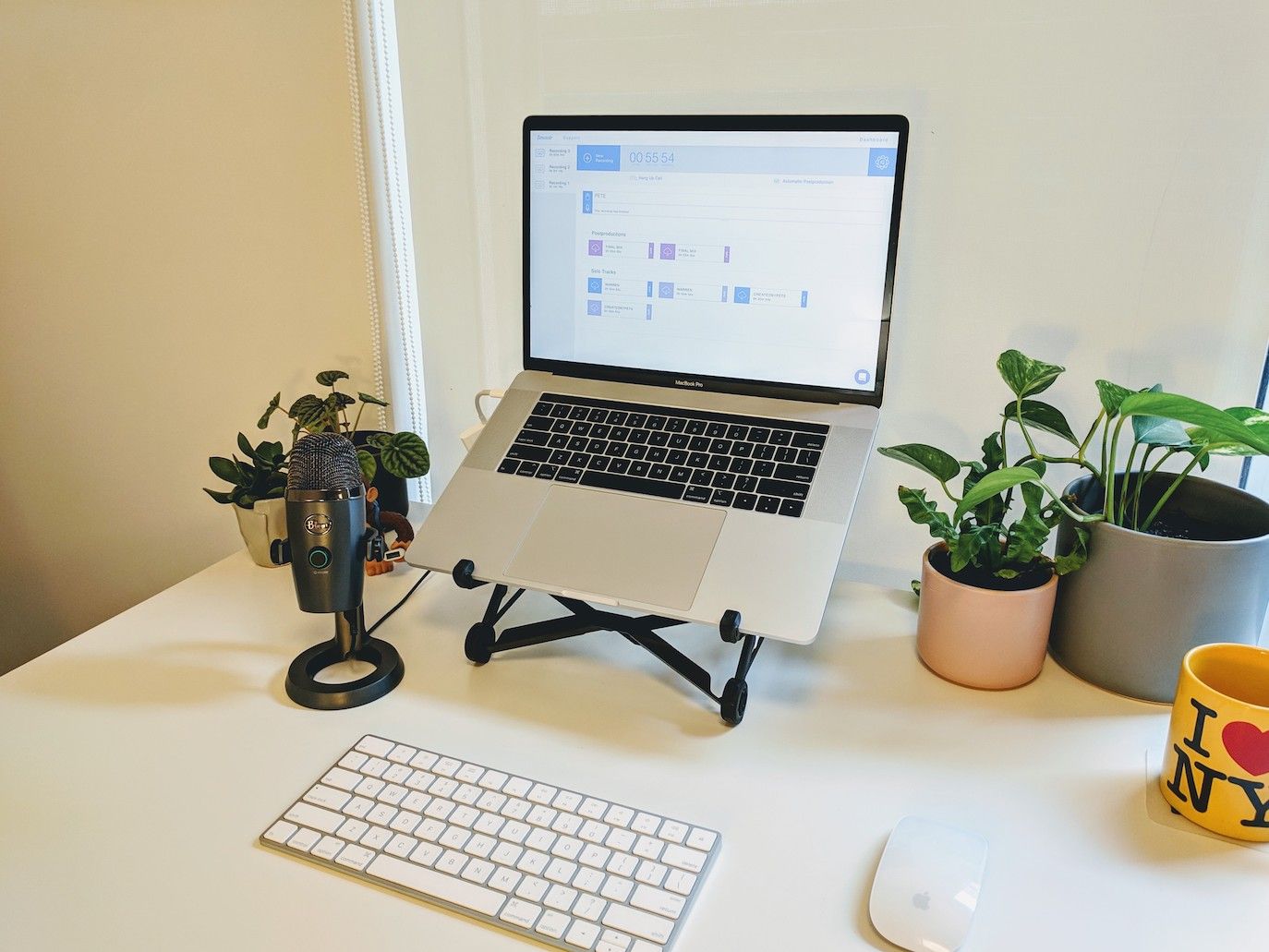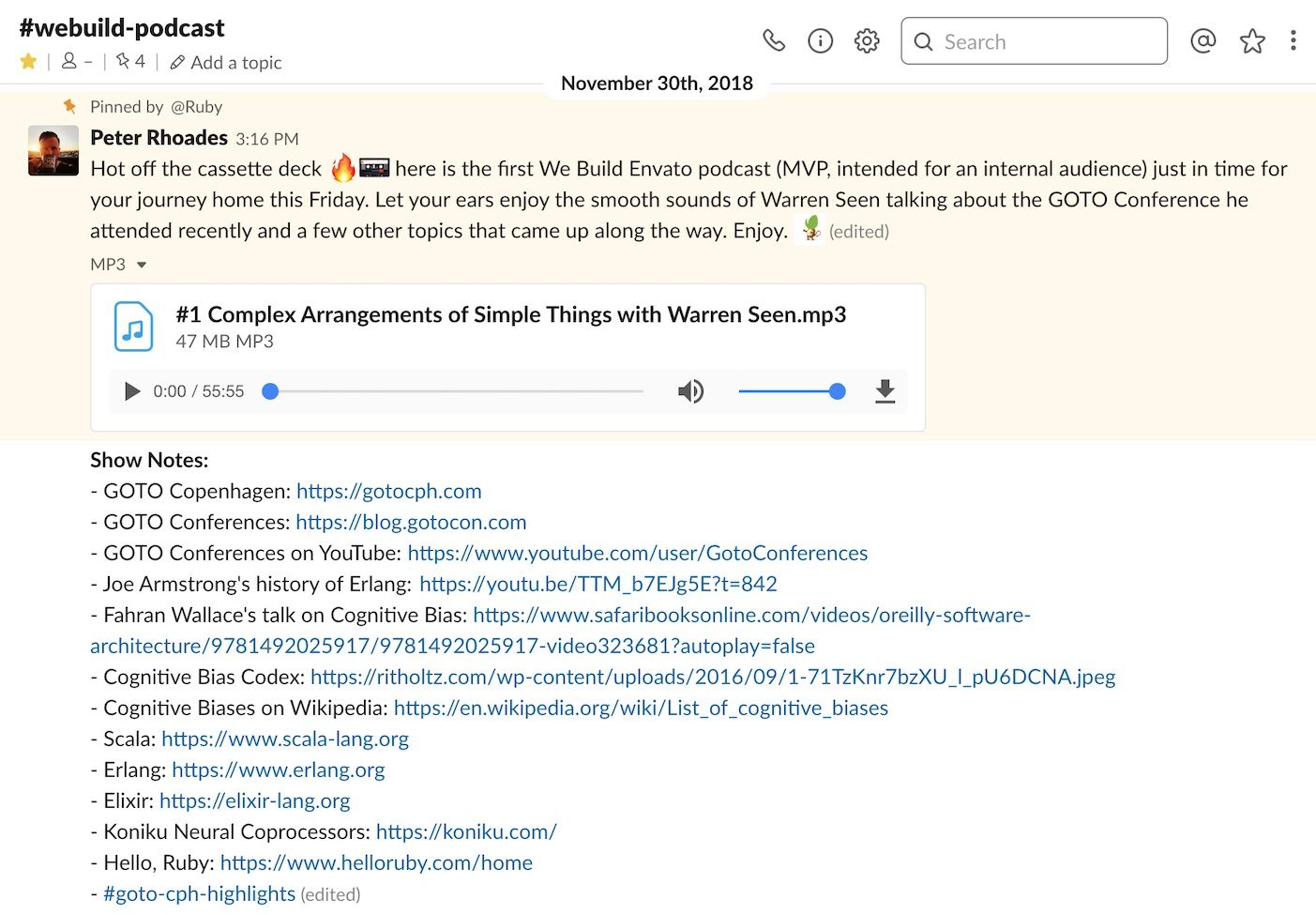Starting a podcast 🎤
Podcasts have been a wonderful companion for me on the commute into Envato HQ here in Melbourne. I really enjoy being able to absorb information on the move, something much harder or just plain dangerous to do if I were trying to read on the move.
With nearly 1 in 4 Americans (I struggled to find meaningful listener statistics for outside the US) have listened to a podcast, it can be a great way to reach a wide audience of loyal listeners. It’s no wonder Apple confirmed there were over 550,000 podcasts at WWDC 2018 in early June.

There are a lot of interesting and talented people at Envato, not to mention a lot of knowledge and insight that could be shared. I thought a podcast to compliment the We build Envato blog would be a good experiment. After some months of procrastination, I built up the courage to hit the big red record button for the first (internal only) episode. Here’s what I learnt along the way.
Equipment setup
I spent a bit of time researching the setup and learning what I could to make my own decision about what I think would be important to start with, my short list was:
- A reliable means to record with remote guests.
- A better quality microphone.
- A “microphone friendly” place to record.

Recording with remote guests
Many people at Envato work remotely and while we are well equipped for remote work I wanted to reduce the chance of any connection issues being recorded. After a bit of searching and experiments with some usual candidates like Skype or simply recording my screen with QuickTime while on Hangouts. All these experienced various issues and course these issues were also captured in the recording.
Then I found Zencastr, a web based application purpose built for podcast recording over the internet. It uses the browser to locally record each remote guest as a separate track, this means it doesn’t capture connection issues (because it records their voice only on their machine). At the end of the recording it uploads everything to a central store so I can download the tracks, or use their automatic post-production feature that mixes the tracks together and does some balancing of the audio.
It works really well, I was very impressed and it was simple to work with and get guests without any recording experience to join the recording via a simple url.
Choosing a microphone
While not absolutely required because my laptop has a reasonable microphone in it. I found using a microphone with a cardoid pickup pattern made a noticeable difference to the audio quality because it would only pick up sound from directly in front of it. The laptop microphone is more general purpose and tries to pickup the entire room which can make your voice sound distant.
The Blue Yeti Nano caught my eye, it is a compact microphone capable of cardoid and omni-directional pickup patterns with a USB interface. The build quality is good although I think a shock mounted arm would go a long way to avoid the vibration the microphone can pick up by sitting on the desk.
Finding the right environment
More than anything else, the environment you record has the biggest impact to recording quality. I cannot over state the how much of a difference it makes, you could have the best equipment money could buy but if you are recording in your bathroom it’s not going to matter.
Our human ears tend to compensate for echos and distortions caused by our environment (most typically hard surfaces), microphones are less forgiving and it’s hard to fix the problem in post-production. You also have to consider outside noise such as traffic, people and even yourself or a guest fiddling with something on the table like a pen could all be picked up.
Fortunately, Envato has a room that has been fitted with some simple acoustic dampening on the walls, this has proved to be the best recording environment I have had access to. My home office is adequate but it does suffer from having a few too many hard surfaces in a small area.
The first episode
Planning
I’ve enjoyed listening to casual podcasts where people talk about what they’ve been doing and there isn’t too much editing or exploratory journalism required. Reduced or zero editing is important because I do not have the skills for editing nor the time/patience to do it currently.
One podcast I have particularly enjoyed the format of has been The Bike Shed by the folks over at ThoughtBot. Chris Toomey has produced some excellent episodes by simply chatting to various current and previous ThoughtBot colleagues one-on-one about things they are working on and excited about.
I figured I could do worse than replicate this format, I just needed a willing volunteer to join me as a guest on the first episode. Fortunately for me Warren (@warren_s on Twitter) said he’d be happy to take the hot seat. Warren had just attended GOTO Conference in Copenhagen so we thought a chat about the conference would provide something interesting to talk about as it was still fresh in his memory.
Recording
My intention was to capture between 30 and 45 minutes of audio, this is a length that would fit into most peoples commute. We ended up recording just over 55 minutes in the end!
This is something we did not anticipate, before starting the recording we were both worried the whole thing would run out of steam about 15 minutes in. Still, too much was better than too little, with a little editing I could probably get it to 45 minutes.
I attempted to do this in GarageBand but while it’s a easy enough application to use it was taking ages to find sections I could cut, then find a natural cut point that didn’t sound strange and it just took way more time than I had anticipated.
In the end I settled with the unedited version and moved on to writing up the show notes, another time consuming activity. I now know to try and keep notes as I record so it is more efficient to write up.
Distribution
There are plenty of way to distribute a publicly available podcast, all you really need is an RSS feed and somewhere to store the audio file. You can do this yourself or there are plenty of services out there that will, for a small fee provide the hosting service, listener analytics and other helpful features.
This podcast however was an experiment, it needed to be private. So I created a Slack channel and uploaded it there. This was not ideal of course, people like to subscribe and listen to podcasts through one of the many podcast applications so there’s some work to be done there if it is to remain an internal podcast.

Taking it public
To make this into a public podcast for Envato would be great fun however, I would find it difficult to do this alone, it would require commitment to a regular release schedule and a little more preparation to keep ahead of that release schedule (incase of sickness or vacations).
All these things are possible, but for now I’m going to keep trying to experiment with the format internally and see what works well and feels sustainable.
If you’ve ever thought about starting a podcast I’d say give it ago, it’s scary but can be a lot of fun for you and the guest(s) and it does get easier to hear your own voice 😆.